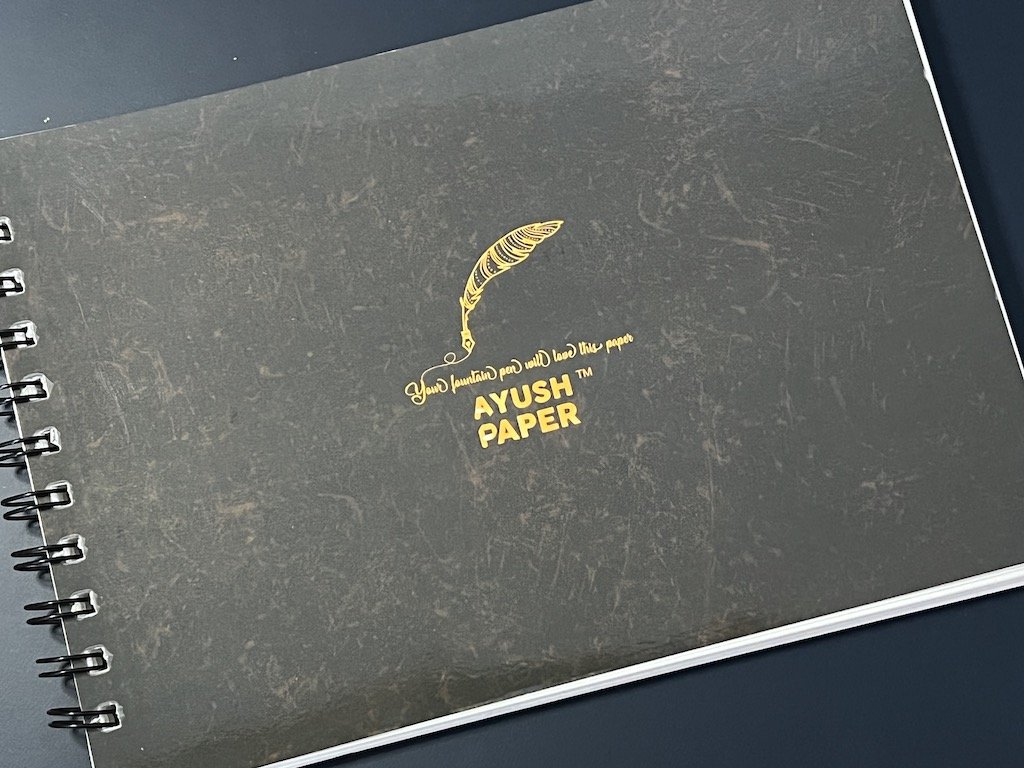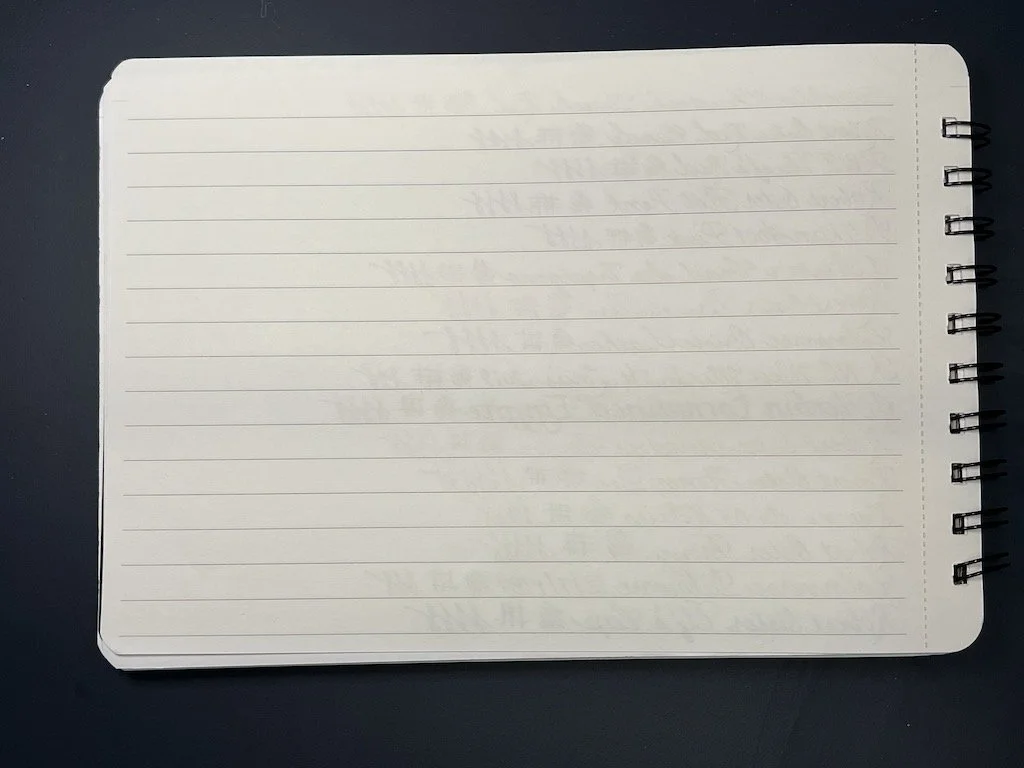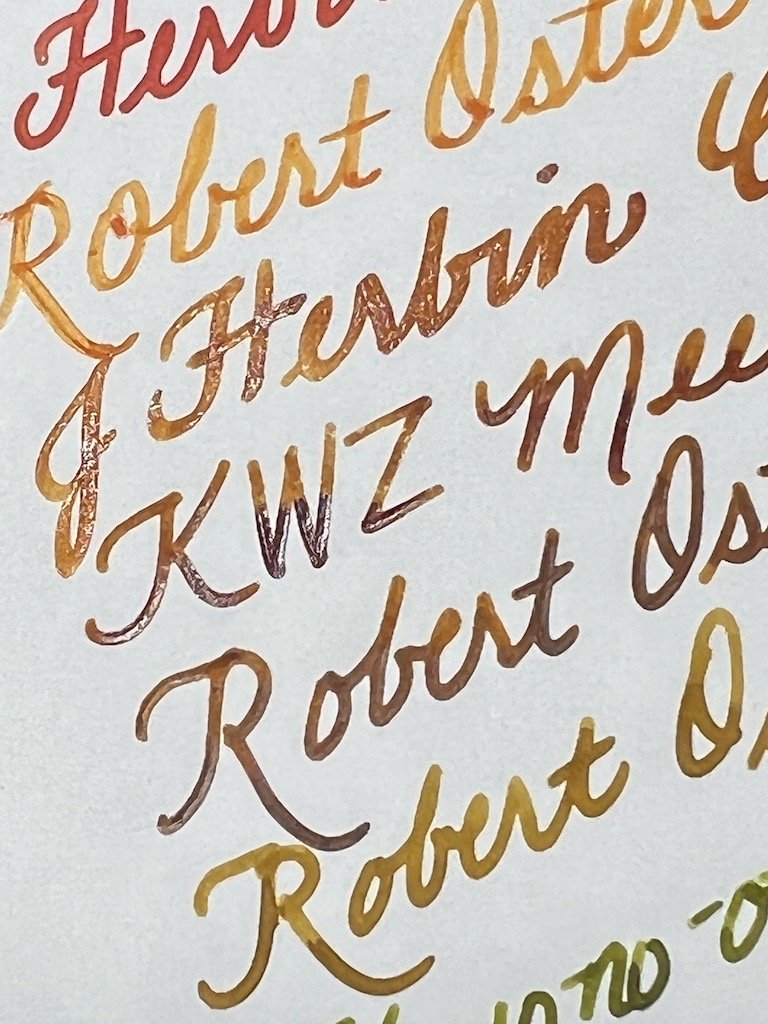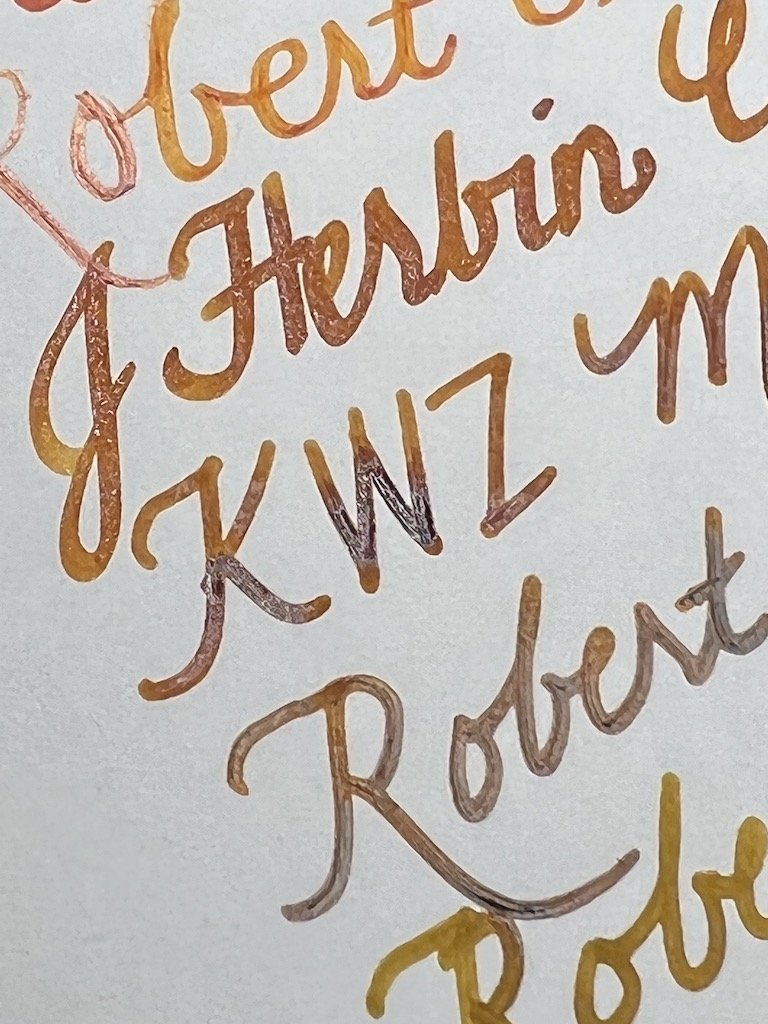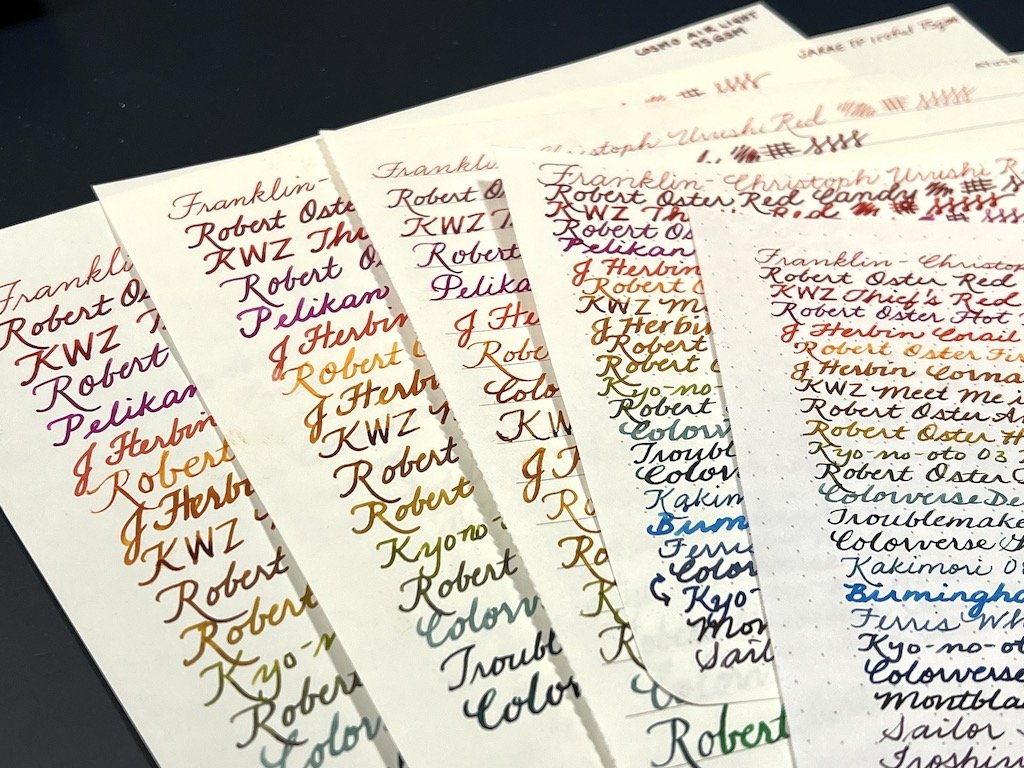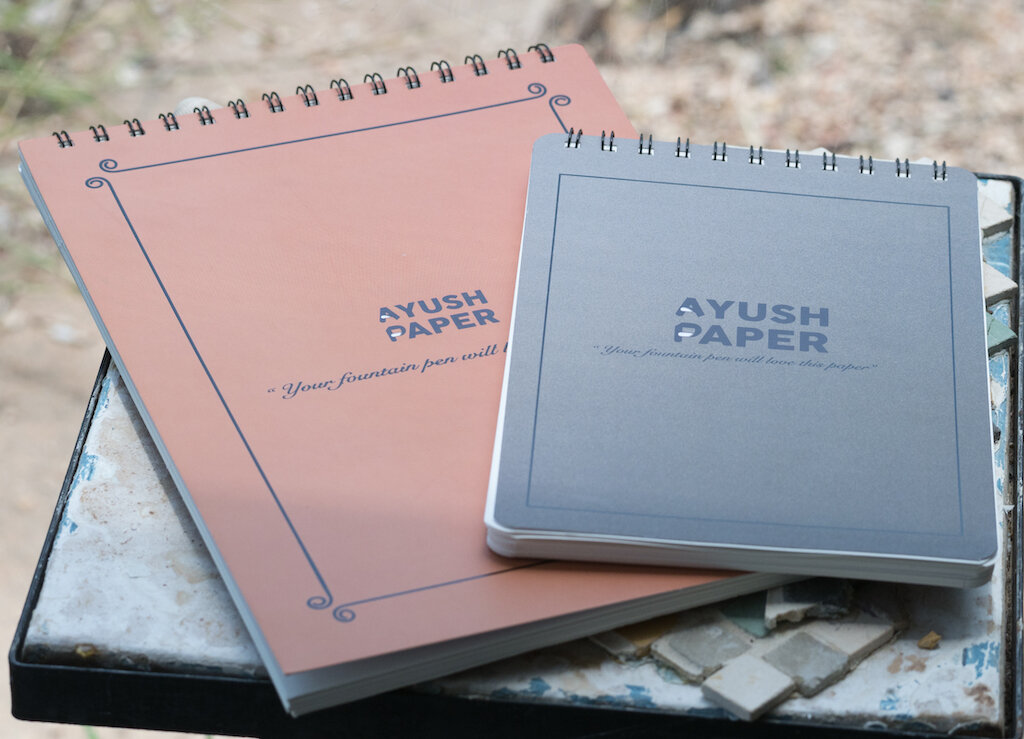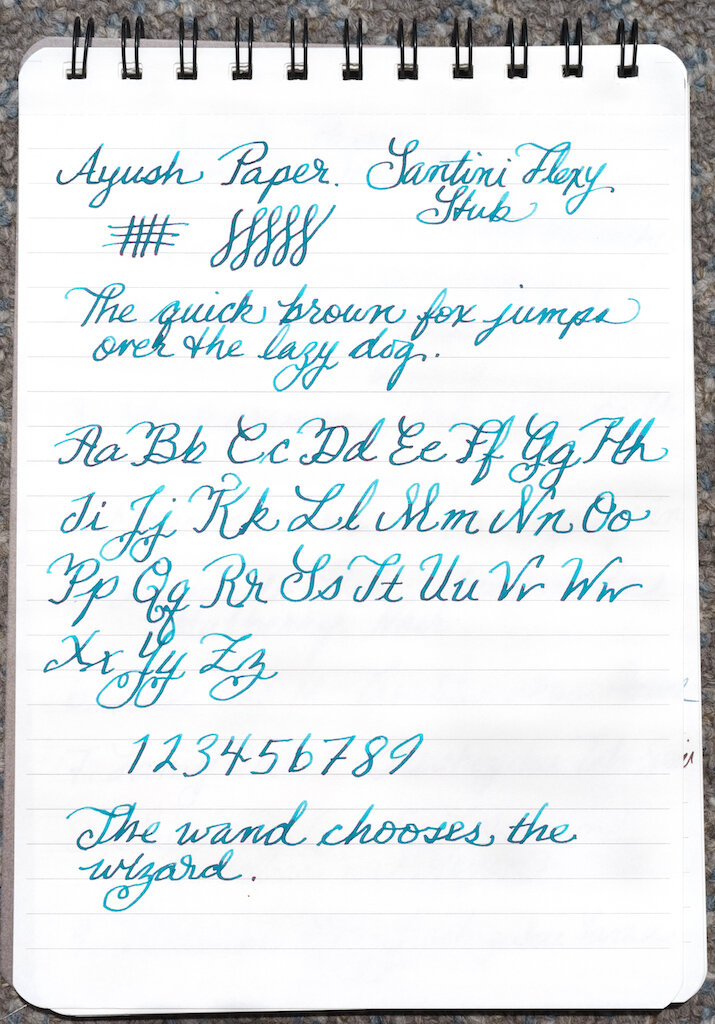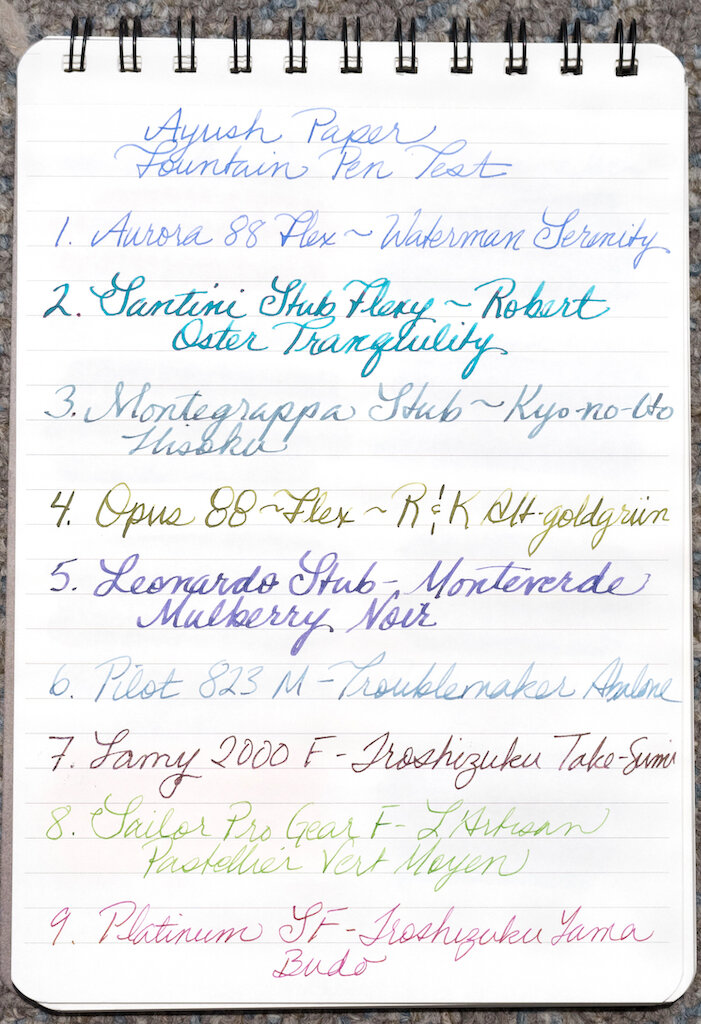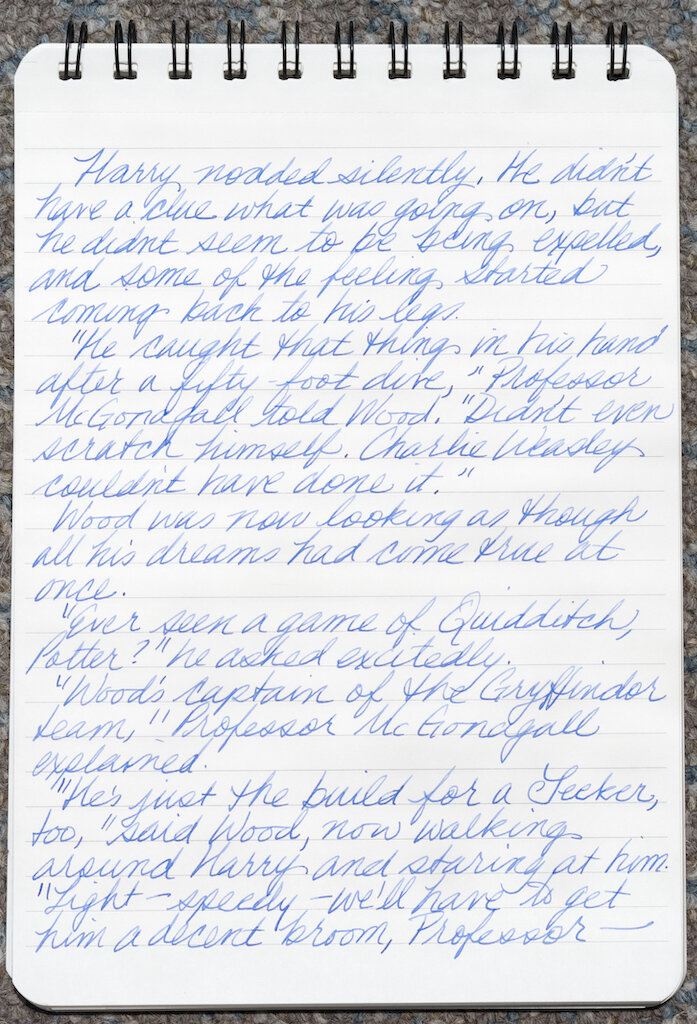(Kimberly (she/her) took the express train down the fountain pen/stationery rabbit hole and doesn't want to be rescued. She can be found on Instagram @allthehobbies because there really are many, many hobbies!.)
I have been meaning to try Ayush Paper after getting a pad for review from Vanness Pens and then last week I just got a sample of Sakae’s new paper and I thought, it’s a sign! Let’s try them both out! I’m not going to go into the Ayush Paper too much since Susan already wrote an excellent review of it last year. But, just so I wasn’t biased, I deliberately did not read it until I finished using it.
The Ayush Paper I used for this review is from an A5-sized, lined, 100gsm paper that is spiral bound in a landscape orientation. The paper held up well to 32 different pens/inks, ranging from near needlepoint to broad nibs, stubs and even flex. There was no feathering, ghosting or bleedthrough on the other side which means you can definitely use both sides. The paper has a slight toothy texture to it, without any of the nibs catching on the paper. Shimmer from J Herbin Cornaline d’Egypte presented no problems, and both saturated and shading inks looked great on Ayush Paper. I was a little surprised to see some of the subtleties in inks like Robert Oster Bronze, which I had always assumed was “just” an olive green ink, but it actually shows a touch of brown on this paper. Sheen was also not a problem and showed up nicely.
Why yes, my fountain pens did love this paper!
Shimmer and shading inks both look great on this paper.
No ghosting or bleedthrough either, even with the super wet flex.
I repeated the same exercise on Sakae TP (Technical Paper, not toilet paper, for those of you who are 12 and had that same initial thought as I did, lol) Iro-ful. Sakae’s Iro-ful webpage doesn’t have a lot of information on it, but says that it will perform well with color, vibrancy and showing off sharp lines. In addition it also has a “softer, gentler texture”, but softer and gentler than what, I have no idea. Iro-ful is 75gsm paper and is available in A4 and A5 loose sheets with a notebook currently in the works.
While writing on the Iro-ful, I couldn’t help but think that the sensation felt familiar. It definitely did not feel like Tomoe River, but rather, it felt slightly squishy, and it instantly reminded me of the Pen Addict Review (P.A.R.) that Brad did recently about Cosmo Air Light from Yamamoto Paper. In it, he said:
“Describing Cosmo Air Light is challenging, because it feels like each single page is made from layers: firm on both sides, squishy in the middle.”
And that is the same sensation I felt when writing on the Iro-ful. It is definitely fountain-pen friendly, produced nice lines and handled sheening, saturated, shading and shimmer inks like a champ with no ghosting or bleedthrough. I hadn’t intended to compare this to Cosmo Air Light 75 gsm but its similarity in feel to Iro-ful compelled me to find how similarly they handled fountain pens.
A playful design for the Iro-ful paper.
The Iro-ful 75 gsm paper holds up great to a variety of inks and nibs.
Move along, nothing to see here (on the back.)
Both shimmer and shade look good on this paper.
Sheen also looks good, I mean, look at that LDL!
Cosmo Air Light 75 gsm behaving just as well as the Iroful.
Both feel very similar to the touch in terms of weight and texture/smoothness. I was easily able to use a guidesheet under both papers. The color of the paper is also very similar - slightly off-white. My writing felt and looked the same on both papers. If I didn’t know better, I would have guessed they are the same paper, though CAL is ever so slightly smoother than Iro-ful, but both feel slightly rougher than Tomoe River but less so than the Ayush.
Just for funsies and because I really needed to write some of these pens dry, I also wrote on Rhodia 80gsm Dotpad as well as 68 gsm Tomoe River paper. Here are some comparison photos.
Rhodia DotPad.
68 gsm Tomoe River.
Rhodia is the whitest paper of the bunch, followed very closely by white TR 68, then Ayush and both the Cosmo Air Light 75 and Iroful being the most off-white without being cream.
I just love all this color!
If you really like Tomoe River, whether 52 or 68 gsm, you may not enjoy the Ayush paper as much because it is (1) a fair bit thicker and (2) has some slight tooth to it. I think it works best for medium and broader nibs as well as those that are more “buttery” because of the toothiness, which can help your nibs feel like they aren’t sliding all over the place. And for different reasons, if you are a TR fan, you may also not enjoy the Sakae TP’s Iro-ful (or Yamamoto’s Cosmo Air Light) because it isn’t as smooth as TR and has a bit of a squishy feel to it. Both Ayush and Iro-ful are great additions if you are more paper-agnostic like me and are happy to discover more options for good, fountain-pen friendly paper that show off ink properties well.
Ayush Paper is available in different sizes, formats and in dot, lined and blank formats, with most prices in the ranging from $7 to $17 USD range. Sakae TP Iro-ful will be available soon (if it isn’t already) on the Vanness website in 100 - A5 looseleaf sheets or 50 - A4 sheets for $14 and $15 respectively
(Thank you to Vanness Pens who provided both the Ayush Paper and Sakae TP Iro-ful at a discount to The Pen Addict for review purposes. The other papers were purchased by me years ago.)

